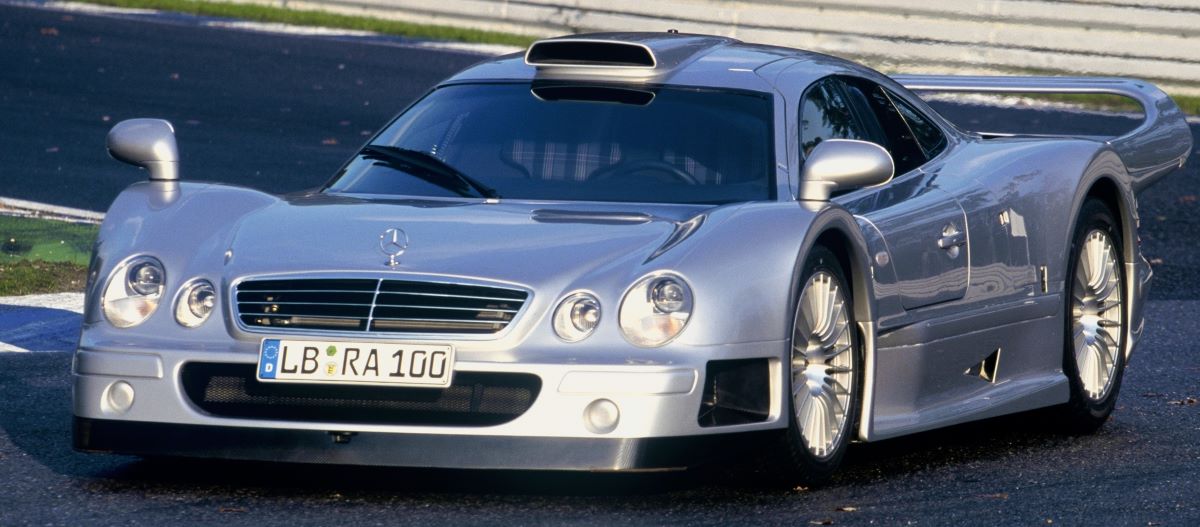
The Mercedes-Benz CLK GTR is a grand tourer and race car that was built for racing in the FIA GT Championship series in 1997, the CLK GTR was designed primarily as a race car, with the road cars necessary in order to meet homologation standards being secondary in the car’s design. Thus the limited production road-going cars were considered racing cars for the road.
After competing successfully in 1997, the race car was upgraded in 1998 for the 24 Hours of Le Mans and renamed the CLK LM. Following the construction of the CLK LMs and the CLK GTR road cars, the project would end in 1999
Even though the FIA GT1 class was cancelled for 1999, Mercedes was obliged to finally deliver the required 25 road cars they had promised. An initial road car was built in 1997 in order to meet initial FIA requirements, but this car was retained by Mercedes. For the other 25 road cars, each was built by AMG at the Affalterbach factory between winter of 1998 and summer of 1999 and differed only slightly from the race car. All of the 25 CLK GTRs ever built were left hand drive except for one.
Driver comfort and refinements were at a minimum in the construction of the road cars as Mercedes-Benz wished to not only offer customers a true race car, but also to attempt to keep the price low. Leather was used in the interior and an air conditioning system was offered. Two small storage lockers were also built underneath each upward swinging door. Traction control was also added for driver safety.
The car retained much of the design of the original CLK GTR instead of the CLK LM, including the V12 and many stylistic elements. One key difference was the rear wing, which used a hoop-style integrated wing in place of the separate racing wing. From the otherwise unrelated standard production Mercedes-Benz CLK, only the instrumentation, front grille and the four headlamps were used.
Ilmor Engineering provided enhancements to the engine, increasing displacement from 5.9 liters to 6.8. This increase in displacement coupled with the removal of a racing air restrictor allowed for 720 bhp (537 kW) and torque to 572 lb·ft (776 N·m). Mercedes-AMG claimed a 0-60 mph acceleration time of 3.1 seconds and a top speed of 215 mph (346 km/h).
The Guinness Book of World Records recorded the CLK GTR as the most expensive production car ever built at the time, with a price of $1,547,620(USD).
After the completion of the 20 original CLK GTRs, AMG’s specialist group H.W.A., who had assisted in the construction of the CLK GTRs, began construction of a roadster version of the CLK GTR. Built either by modifying an existing CLK GTR or by building a new car from spare chassis and parts, these cars were modified with the removal of their roofs as well as a reconstruction of their engine covers. Also the rearwing was replaced by a separate black wing, close to the one on the race CLK-GTR. Further the Roadster can be recognized by its different grille, which had a large star in it instead of a small version above it. Two rollbars integrating the cockpit headrests were used not only for structural integrity, but also rollover protection. A total of six CLK GTR Roadsters were built by the company.
H.W.A. also constructed a second variant, known as the CLK GTR Super Sport. These cars were similar to CLK GTRs, yet were powered instead by the newer Mercedes-AMG 7.3L V12 which had been in use in the Pagani Zonda and Mercedes-Benz SL73 AMG. Producing 720bhp results in 0-60mph time of just 3.0s (0-100 km/h 3.2 s), and 100mph being achieved in 5.2 s, along with the added power/torque upgrade and a weight loss resulted in astonishing performance, only taking 9.4 s at 148mph to reach the quarter mile along with a top speed of 234mph for the SuperSport. The car also gained an additional front splitter for better stability at high speeds. Only 5 were built with the 7.3L engine: prototype #2, chassis #01, #03, #13, and #17.
In total, 26 CLK-GTR production road versions were constructed. Of these, 20 are coupes and six are roadsters. Two of these were equipped with RHD steering: one coupe (silver exterior/tartan interior) and one roadster (dark silver exterior/magenta interior). Both RHD cars were auctioned on 28 October 2009 by RM Auctions in London. The roadster fetched £616,000 ($973,834 USD) and the coupe £522,500 ($824,609 USD).
Technical Data:
Engine specifications
- Engine(s) 6.9 L 612 bhp (456 kW) V12
- Cylinders / arrangement: 60-degree V12 engine, 4 valves per cylinder
- Displacement: 6898 cc
- Bore x stroke: 89.0 x 92.4 mm
- Rated output: 450 kW (612 HP) at 6800 1/min
- Rated torque: 775 / 5250 Nm at 1/min
- Maximum RPM: 7200 1/min
- Compression: 10.5
- Mixture formation: microprocessor-controlled injection system with hot-film air mass meter: (Bosch HMS 6)
Performance
- Top Speed – 200 mph
- 0 – 60 mph – 4,0 sec
- 0 – 100 mph – 6,5 sec
- Gearbox – 6 speed
- Acceleration 0 – 100 km/h 3,8 s
- Acceleration 0 – 200 km/h 9,9 s
- max. speed 320 km (200 miles/hr)
Power transfer
- 4-discs high performance clutch
- 6-speed gear – sequential, electronically controlled gear change
- Total length 4855 mm
- Total width 1950 mm
- Total height 1164 mm
Production 1998–1999 (35 produced) Assembly Germany
- 2 prototypes
- 7 racing variant coupes
- 20 road variant coupes
- 6 road variant roadsters
Factory options
- Monocoque carbon fibre with integrated steel roll bars, leather steering wheel with airbag, passenger airbag, air-conditioning, audio system, adjustable pedals
Assemble of a Mercedes-Benz CLK GTR



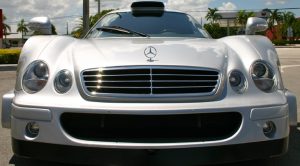
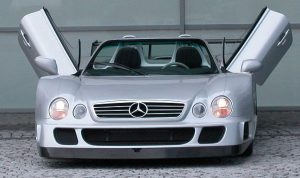
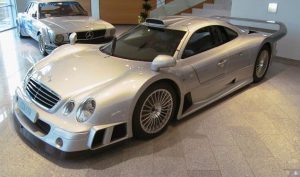
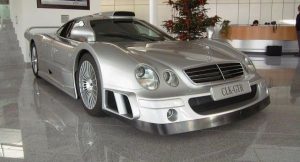
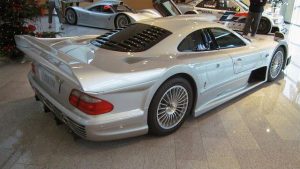
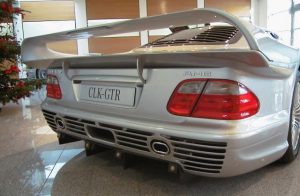


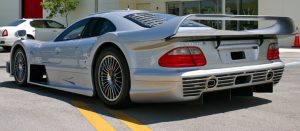
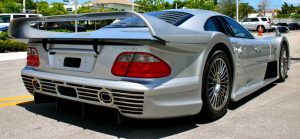


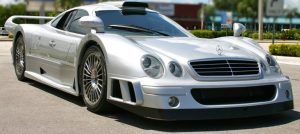
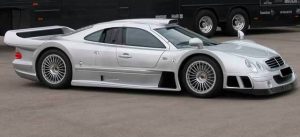
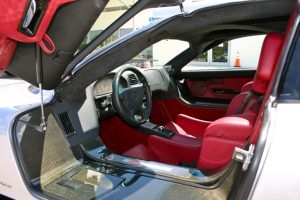
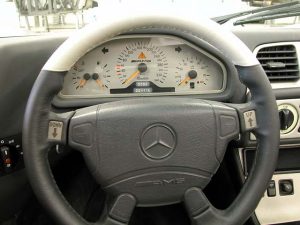



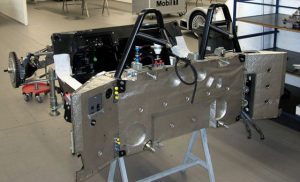
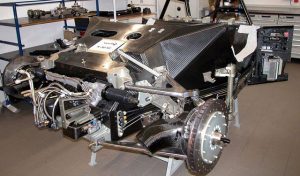
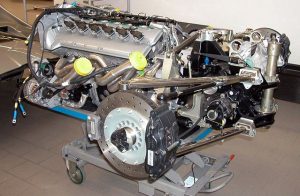







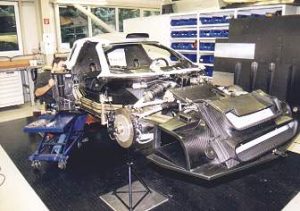

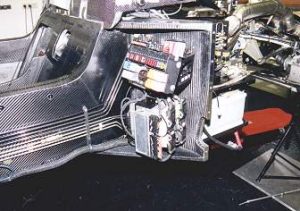
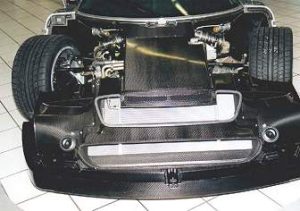


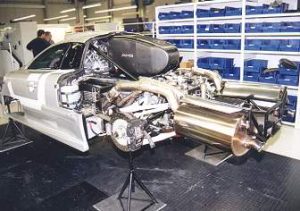


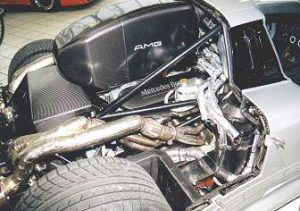
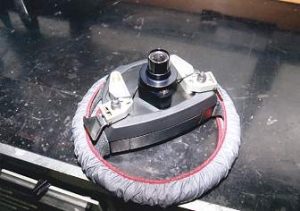
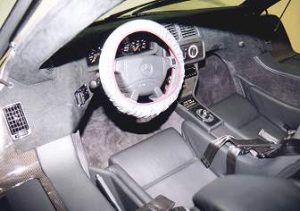

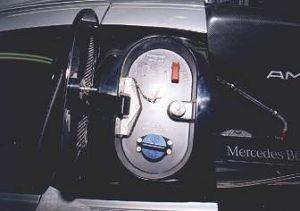

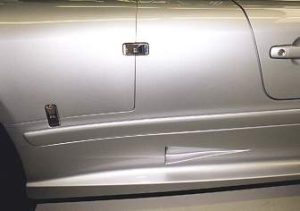

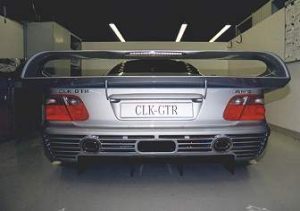


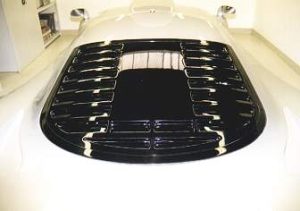

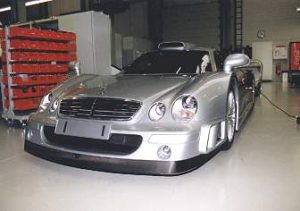
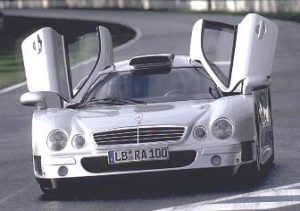
You must be logged in to post a comment.